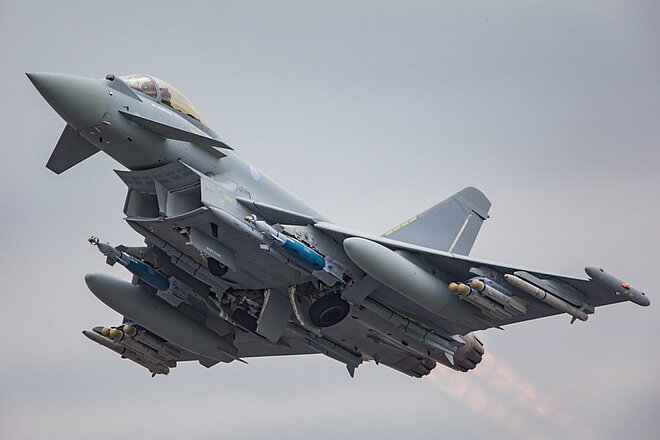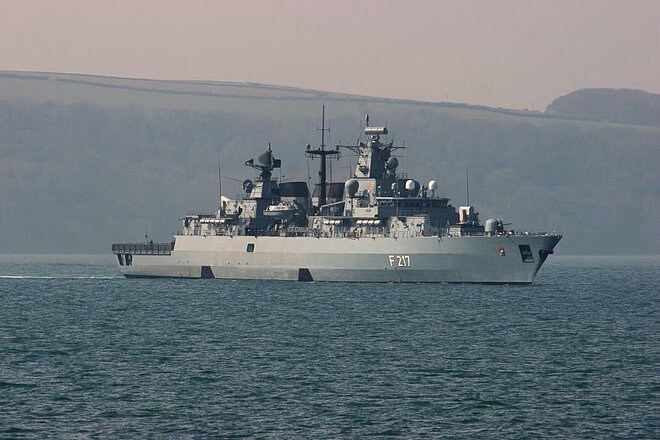"Si vis pacem para bellum" - Simulation in the area of defense
![[Translate to English:] Merkle & Partner Defense Projekte [Translate to English:] Merkle & Partner Defense Projekte](/fileadmin/_processed_/d/1/csm_merkle-partner-defense-fregatte-f217_2_01fc0aa469.jpg)
It used to be called debt, but "special assets" just sounds better.
The fact that national defense is not in the best condition was shown by an inventory in Zeit Online from 2014: Under the headline.
Bundeswehr equipment: The standing army
it is described: "Aircraft, tanks, submarines - a large part of the Bundeswehr's equipment is standing around because spare parts or mechanics are missing. We show what still drives and flies."
| Weapon Type: | Stock: | Fully operational: | Percent: | |
|---|---|---|---|---|
| Armored personnel carrier GTK Boxer | Army | 180 | 70 | 39% |
| Battle tank Leopard 2 | Army | 273 | 232 | 85% |
| Self-propelled howitzer 2000 | Army | 89 | 76 | 85% |
| Combat helicopter Tiger | Army | 31 | 10 | 32% |
| Transport helicopter NH-90 | Army | 33 | 2 | 6% |
| Missile defense system Patriot | Airforce | 13 | 7 | 54% |
| Transport plane C-160 Transall | Airforce | 56 | 21 | 38% |
| Tornado | Airforce | 89 | 36 | 40% |
| Fighter Eurofighter | Airforce | 109 | 8 | 7% |
| Transport helicopter CH-53 | Airforce | 67 | 7 | 10% |
| U-Boot 212 A | Navy | 4 | 1 | 25% |
| Naval helicopter Mk 41 Seaking | Navy | 21 | 3 | 14% |
| Frigates | Navy | 11 | 7 | 64% |
| Korvette K 130 | Navy | 5 | 2 | 40% |
I don't believe that there has been any positive change in this situation since 2014. However, it does seem that the defense sector has been somewhat "neglected," as has a large part of our infrastructure. Instead, we have dealt with other extremely important issues politically, which I do not want to go into in detail.
So now we have a special fund that is supposed to replenish the stocks. We are curious to see how much of this will actually be used to equip the troops.
In the course of the last 33 years, Merkle & Partner has carried out simulations in the field of structure FEM and flow CFD on some of the above projects in the field of defense for the army, air force and navy, which I would like to go into in a little more detail.
Air defense missiles
My second order in 1989 came from Dynamit Nobel in Cologne. Here I investigated, at that time still as a lone fighter, the transient heating of the laval nozzle of air-to-air missiles.
Eurofighter
One of the first major projects at Merkle & Partner in the early 90s was the simulation of the stick of the Eurofighter for BGT. Here, the behavior of the stick during actuation, misuse, shock, vibration, gunfire, etc. had to be computationally evaluated using the finite element method (FEM simulation). At the same time, the requirements regarding lightweight construction had to be met or the weight optimized.
Later, the behavior of target acquisition devices and optics under vibration and shock load were added to the simulation calculation.
Tiger
In the case of the Tiger combat helicopter, we investigated the transient thermal behavior of target acquisition devices or the circuit boards in the event of a cooling failure for what was then EADS at the end of the 1990s. This was one of the first projects in which Merkle & Partner investigated comparatively large models thermally with radiation. At that time, the investigations were still carried out using FEM simulation methods; the heating of the air and the different flow conditions in the circuit board boxes were not yet taken into account.
Frigates and corvettes
In the naval sector, tasks often involved the vibration decoupling of machinery (compressors, engines, winches, pumps) from the ship's deck. In one case, it was a question of the behavior of screens and information systems, which must be adequately protected in the event of shock loads from hits or water hammer.
Interesting projects here included simulation calculations of various winches and towing devices for Aljo to tow sonars under different scenarios and loads.
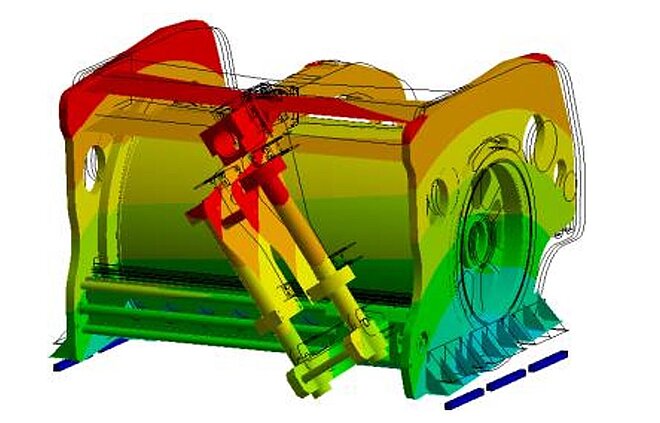
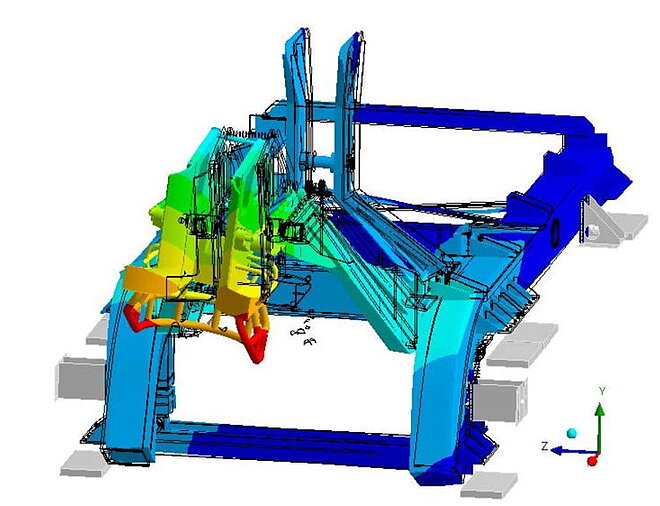
Tanks
For Lockheed Martin, Merkle & Partner carried out extensive investigations of the turret drives and actuators of tanks as well as the electronic units in accordance with MIL standards. This included modal, spectral, PSD, SRS and RSM investigations in all operating situations.
Here alone, we performed verifications for over 140 different dynamic load scenarios.
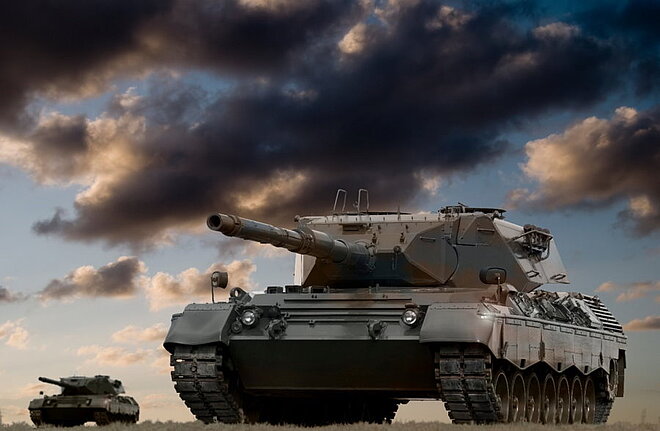
We have also worked on the so-called glass tank from Hensoldt on thermal management issues. The questions here are how to get rid of large amounts of heat at high ambient temperatures so that electronic components do not overheat. Flow conditions were also mapped very accurately here.
Submarines
In the case of submarines, interactions of the periscope with regard to flow-excited vibration were the task in the Defence area; which Merkle & Partner considered with fluid-structure interaction (FSI). Also within, high power losses occur in a confined space, which must be cooled.
The flow around the submarine was also mapped in the periscope area.
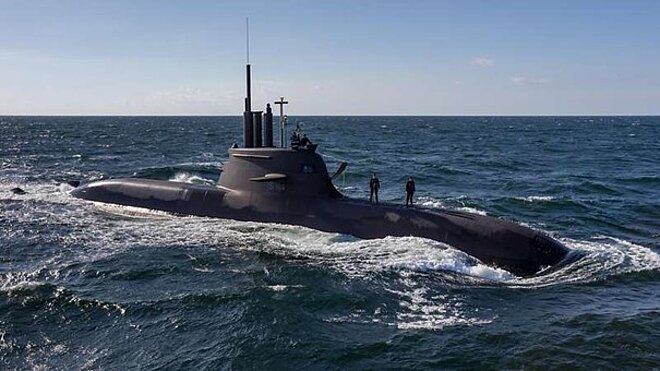
This is only a small selection of the simulations and tasks with FEM and CFD in the field of defense, both notations are correct.
Merkle & Partner is very familiar with all common standards (MIL Standard, BV 0230, BV 0240) and the calculation methods. We have the required software packages and also the necessary computing power for large projects.
From the point of view of a calculation engineer with several decades of experience, there are always two main topics in the field of defense: Dynamic loads (vibration and shock), and thermal management under sometimes extreme conditions. And yes, weight also plays an essential role and should be as low as possible.
Yours Stefan Merkle
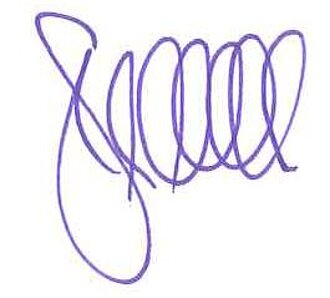
PS: Here are a few more explanations:
Shock loads are short-term, very high accelerations or forces that occur when firing a gun, missiles, hitting a mine, hits, explosions in the environment, etc.. Here there are characteristic histories in each case for land vehicles, ships, helicopters, jet engines, which are used for designs of military equipment.
Vibrations are several simultaneously occurring excitation frequencies, which can excite the vibration of components or assemblies. While shock loads have a short-term effect, vibrations have an effect over a longer period of time.
Various methods can be used to determine the stresses and deformations to be evaluated here using FEM calculations.
The most accurate, but unfortunately also the most complex method is direct time integration. Here, the stresses are obtained as a function of location and time. In the case of shock or crash loads, this method is sometimes used; in the case of vibrations, but also in the case of shock loads, one often resorts to the so-called modal superposition. This means that the response of a structure is composed of its eigenmodes (vibration at a certain natural frequency). Nonlinearities can then no longer be represented, but the computation times are considerably shorter.
Terms often used in this context are:
PSD Power Spectral Density
SRS Shock Response Spectrum
RSM Response Spectrum Method (response spectrum)
